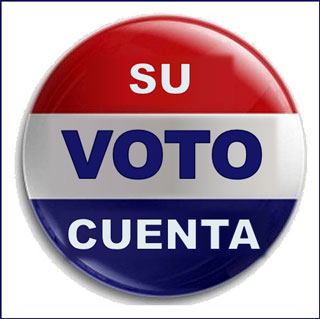Nearly 30 percent more Texas Latinos went to the polls in 2016 than in 2012, reducing the participation gap with other Texas voters and signaling to some observers that elections will become increasingly competitive in the Lone Star State.
Non-Latino voters increased by a more modest 9.2 percent between presidential elections, according to newly released numbers from the Texas Legislative Council.
The percentage of registered Latinos who went to the polls also increased from 2012, from 47.2 percent to 49.8 percent. But that turnout rate remained well below that of non-Latino voters, which was 62.9 percent in 2016. That represented a decrease from 2012 when turnout was 65.4 percent among non-Latino voters.
As a result, the share of the electorate with a Spanish surname increased from 17.2 percent in 2012 to 19.4 percent in 2016. Latinos make up 38 percent of the Texas population, but historically vote at lower rates than Latinos in other states and other groups in Texas.
[…]
Rice University political scientist Mark Jones called the increase “notable, but not dramatic,” and said it mirrored jumps in past presidential elections.
“The Texas electorate becomes more Latino and less Anglo with every passing electoral cycle,” Jones said. “But the increase is fueled primarily by natural demographic trends rather than by a dramatic spike in participation rates among Latinos.”
State officials obtained the numbers using a count based on a list of Spanish surnames; the numbers don’t account for every Latino voter.
[…]
According to an analysis of early voting figures in 20 large counties, Derek Ryan, a political consultant and former research director of the Texas Republican Party, found that new voters are driving the increase in Latino participation: 18.7 percent of ballots cast by voters with Spanish surnames came from those with no electoral history in Texas; for non-Latinos, only 12.8 percent came from new voters.
Voter registration among Latinos also increased 20 percent over 2012 compared with 14 percent for non-Latinos. Lydia Camarillo, vice president of the Southwest Voter Registration Education Project, said the registration and turnout numbers for 2016 elections are higher than her group anticipated, but she said Texas remains a state that puts high barriers to voter registration.
I don’t think any of this is surprising, but I don’t want to make too big a deal of it, for the reasons articulated in the second section I highlighted. What are the trend lines here? How does the turnout rate compare to the voting age population and the share of the VAP that is registered? Latino voters are everywhere, but the bulk of them are in two distinct places, along the border and in big urban areas, primarily Harris, Bexar, and El Paso counties. How have these rates changed over time in those places, and everywhere else? There’s a lot more information I’d like to have before I drew any conclusions about what this particular piece of data may mean.
One thing I do agree with is that a big driver in the increase in Latino participation is the increase in voter registration. That’s what drove the increase in overall turnout in Harris County. No question that needs to be a Democratic priority going forward, as a lot of those new registrations are going to come from people who have just turned 18, new citizens, and people whose registrations had lapsed because they had moved. You want to understand why the Legislature is not interested in making it easier to register, there’s your answer right there.


State wide it will not change things in the very near future. Here in Harris County it can make the County Blue even in non-presidential years.
The elephant in the room that I had mentioned previously that Democrats here in Harris County are not addressing. There is a lack of foresight on the part of the Democrats, Republicans are always doing out reach to Latino areas, not including the Koch Brother’s organization, Libre Initiative.
It is a delicate balance as many Democrats have closed the doors on immigrants (Lane Lewis locking the door on the Dreamers, Adrian Garcia deporting more people than any other sheriff in the United States). Many of those millenniums are children of parents that are not here legally, one or both. If one listens to many Republicans and Democrats they are often called “Illegal Criminal Aliens”. If one reads the comments those same people often refer to the persons here without proper authority as cockroaches or worse.
The Harris County Democratic Party has to start thinking about the future, because if they limit themselves to Gay Rights and Women Rights, many of those young people, not just the brown people will vote 3rd party or just not vote. There are indications that there was sufficient such movement that it caused HRC the election.
While this site often looks at the Bills that are being considered, it has not looked at one that would allow a lot of professionals to not provide service to many in the homosexual community. Think on that if that is important to many out there why would I join your fight if you don’t consider my fight as worthy?
http://www.salon.com/2017/02/15/the-new-license-to-discriminate-bill-in-texas-may-be-the-most-extreme-anti-lgbt-proposal-yet/
Anecdotally, I can say that Latino turnout was up because Dems successfully promoted the message that Trump hates Mexicans. The people I know of Mexican descent, especially those whose families were beneficiaries of the Reagan amnesty, as well as the aforementioned “mixed” groups, were energized to come out and vote against Trump. I don’t know how that shook out in down ballot races though. There was a lot of excitement in social circles to vote against the bad man Trump who hates Mexicans, and I know at least one person personally, who had never voted for anything before, that came out to specifically vote against Trump.
It will be interesting to see if that fervor can be repeated in 2018 when Trump is not on the ballot.